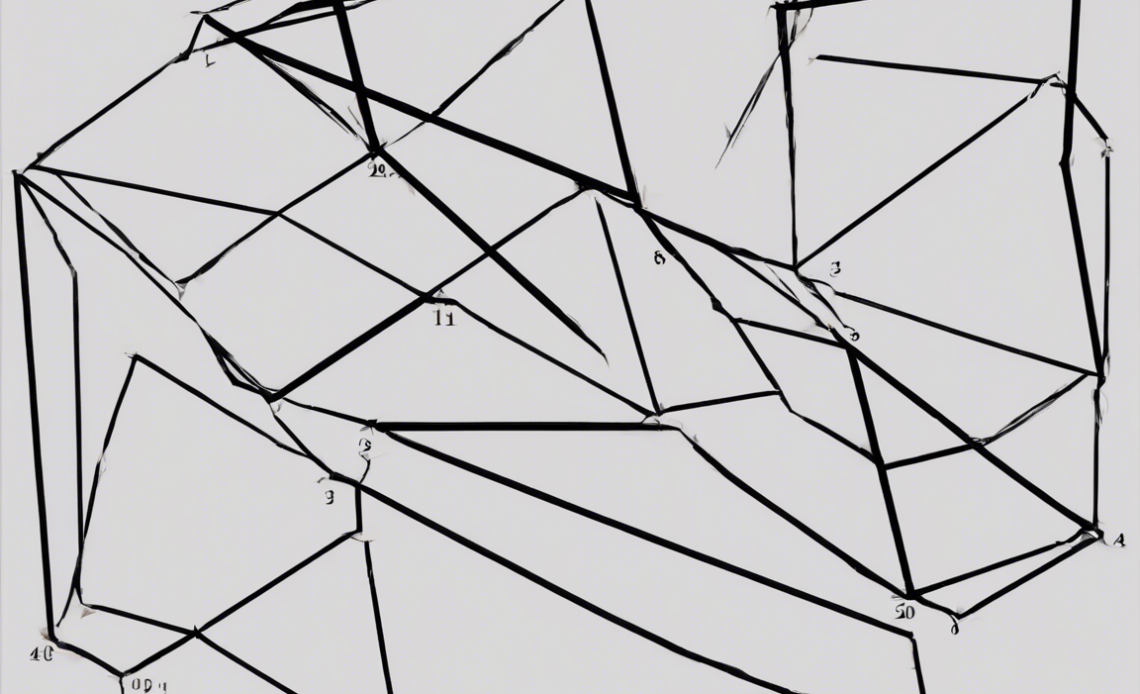
When working with polygons, one common task is calculating the length of its diagonals. Diagonals are line segments that connect two non-adjacent vertices in a polygon. The process of finding the length of diagonals can vary based on the type of polygon. In this article, we will explore various methods to calculate diagonals in polygons, including regular polygons, concave polygons, and irregular polygons.
Regular Polygons
Let’s begin with regular polygons, which have equal sides and equal angles. In a regular polygon of n sides, the formula to calculate the number of diagonals is given by:
Number of diagonals = n(n-3) / 2
To find the length of each diagonal in a regular polygon, you can use the Pythagorean theorem. For example, in a regular pentagon (5 sides), the number of diagonals would be 5(5-3) / 2 = 5 diagonals. By dividing the regular pentagon into triangles from a central point, you can find the length of each diagonal using trigonometry.
Concave Polygons
Calculating diagonals in a concave polygon, which has at least one interior angle greater than 180 degrees, can be a bit more challenging. One approach is to decompose the concave polygon into smaller convex polygons, where the diagonals are easier to calculate. Then, you can sum up the diagonals of the individual convex polygons to get the total number of diagonals for the concave polygon.
Irregular Polygons
For irregular polygons, where sides and angles are not equal, calculating diagonals can be more complex. One method is to draw all the diagonals from one vertex and count the total number of diagonals. Another approach is to use the formula:
Number of diagonals = n(n-3) / 2 – m
where n is the number of sides and m is the number of vertices on the polygon boundary.
Properties of Diagonals in Polygons
- Diagonals in a polygon can help determine the total number of triangles that can be formed within the polygon.
- The sum of the interior angles of a polygon is equal to 180 degrees multiplied by the number of triangles that can be formed using the diagonals.
- Diagonals in a polygon can also help find the area of the polygon by dividing it into triangles and applying trigonometry formulas.
Frequently Asked Questions (FAQs)
Q1: How do diagonals help in determining the symmetry of a polygon?
A1: Diagonals can exhibit patterns of symmetry in polygons. For instance, regular polygons have a high degree of symmetry, with diagonals passing through their center.
Q2: Can the length of diagonals in a polygon be irrational?
A2: Yes, in many cases, the length of diagonals in polygons can be irrational numbers, especially in complex irregular polygons.
Q3: What is the relationship between the number of sides and the number of diagonals in a polygon?
A3: The formula for calculating the number of diagonals in a polygon is influenced by the number of sides, as described earlier.
Q4: Are all diagonals of a polygon of equal length?
A4: In most polygons, diagonals are of varying lengths. Only some specific regular polygons may have diagonals of equal length.
Q5: How do diagonals in a polygon contribute to its interior angles?
A5: Diagonals in a polygon can help determine the total number of triangles that can be formed within the polygon, which in turn relates to the sum of its interior angles.
In conclusion, understanding how to calculate diagonals in polygons is crucial for various geometric applications. Whether dealing with regular, concave, or irregular polygons, knowing the formulas and methods to determine diagonals can aid in solving complex geometric problems effectively. By utilizing the properties and relationships of diagonals in polygons, mathematicians and geometricians can explore the intricacies of these geometric shapes further.

